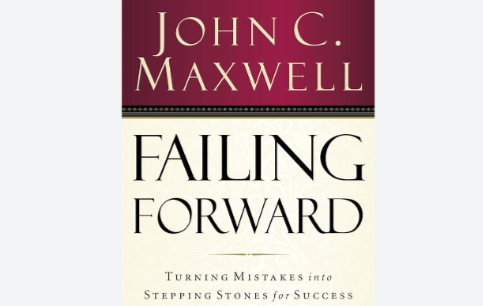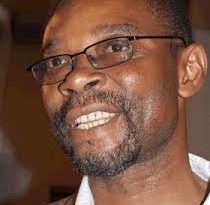Book Review: Failing Forward By John Maxwell
Failing Forward is a sixteen chaptered book, and includes a preface at the beginning, titled: Becoming a REAL Success; as well as pages for bibliographical references/research and information about the author at the ending pages.
Read: Tips On How To Apply for Writing Contests
Failing Forward is broken into 4 parts:
- Introduction, Redefining Failure and Success,
- Do you Mind Changing Your Mind?
- Embracing Failure as a Friend and
- Increasing Your Odds for Success.
It’s a book that handles deeply the psychology of success and failure, presenting case studies mostly of people, companies, organizations and nations that managed to come back from major setbacks or failures to succeed and even self-actualize.
It’s one of the most interesting books I’ve read. Written in the typical John Maxwell style, it is spiced up with anecdotes, stories and quotes relevant and leading towards the lessons to be learned from the book.
Book Title: FAILING FORWARD, Turning Mistakes into Stepping Stones for Success
Author: John C. Maxwell (1947 – Date)
Publishers/Year: Thomas Nelson/2000
Reviewer: Amarachi Obiego
ISBN – 13: 978–0–7852-8857–2
Preface
In the Preface, Becoming a REAL Success, Maxwell points out that a person needs only four things to succeed. You can remember them easily by thinking of the word REAL: Relationships, Equipping, Attitude, and Leadership.
Chapter One
In Chapter One he explores the main difference between people who achieve and people who are average people, which he chalks out to how they view, handle and respond to failure. He used the story of Mary Kay Ash to buttress his point.
Chapter Two
In Chapter Two, using the story of Baseball player Tony Gwynn and Truett Cathy, the founder of Chick-fil A restaurant chain, he gave a new definition to failure, which he explained as the price you pay for progress, as it provides growth and learning opportunities that would not be had otherwise.
Chapter Three
In Chapter Three, using the example of Erma Bombeck, an accomplished journalist, and Rudy, a football player, he uncovered the seven abilities needed to fail forward.
Chapter Four
He used the story of the Wright Brothers and Samuel P. Langley, in Chapter Four to show how fear of failure can impede success, giving us what he calls the “Fear Cycle” Fear—Inaction—Inexperience—Inability, and also showed how we can break the cycle.
Chapter Five
He showed us how not to allow our failures to negatively condition us, using the examples of a research work conducted by business professors Gary Hamel and C.K. Prahalad, with a group of monkeys. It’s a vivid story of failure, and its effect when it creates a stronghold in the mind of a person. The Chapter closed with helpful tips on how to exit the “failure freeway”.
The Third Part of the Book, Do You Mind Changing Your Mind, shows how we can reorganize our thinking to confront failure and lead us to success.
Chapter Six
In Chapter Six, he pointed out that failure is an inside job, instructing us not to allow failure get inside us.
Chapter Seven
Using the story of Arnold Palmer, one of the greatest sportsmen of the twentieth century, he asked a critical question: Is the Past Holding Your Life Hostage? That was covered in-depth in Chapter Seven. He showed how we can break from the past to create our own breakthroughs.
Chapter Eight
In Chapter Eight, we see failure as an opportunity to meet with ourselves, to understand our own weaknesses and deal effectively with them, which must begin from the ability to look ourselves in the mirror and take responsibilities for the failure.
Chapter Nine
In chapter nine, Mr. Maxwell explores with us another yet effective way to fail forward: the ability not to stay stuck in our egos, but to give more of ourselves to others and help them.
Part Four deals with helping us to embrace failure as a friend.
Chapter Ten
In chapter ten, he teaches us how we can grasp the positive benefits from negative experiences, while chapter eleven emphasizes the need to take a risk, because that’s the only way to succeed.
Chapter Twelve
Chapter twelve teaches us how to make a “best friend” of failure. Using the saying, “whatever hurts, instructs”, by Benjamin Franklin, and the story of Dr. Beck Weathers, a mountain climber, we see how disability and weakness can be transformed into a force to propel us to greater heights.
Part Four, titled, Increasing Your Odds for Success, teaches us how to…you got it right; increase our odds for success…lol.
Chapter Thirteen
In Chapter thirteen, he outlined the top 10 ways people get in their own way, and prevent their own success. These were, Poor People Skills, A Negative Attitude, A Bad Fit, Lack of Focus, A Weak Commitment, Unwillingness to Change, A Short-Cut Mindset, Relying on Talent Alone, A Response to Poor Information and No Goals.
Chapter Fourteen
In chapter fourteen, he teaches us about little differences between failure and success that makes a big difference and how we can make the necessary changes for continuously developing this difference.
Chapter Fifteen
Chapter fifteen focuses on how to put experience into positive use. Titled, It’s What You Do After You Get Back Up That Counts, it teaches us how to make the changes demanded us by our experiences, in our quest for success. It focuses on re-evaluating our programs, and planning again with renewed focus.
Chapter Sixteen
The final chapter of Failing Forward, recaps everything we’ve learned in the course of the book, and encourages us to act on the lessons contained therein.
I found the book, Failing Forward a terrific, educating and entertaining read. It ranks very high on the list of my favourite books, and I strongly recommend that all of us read and even own a copy of this fascinating book.





